Bradley T. Hughes
Assistant Professor Department of Psychological and Brain Sciences
Villanova University
About
Dr. Bradley T. Hughes is an Assistant Professor of IO Psychology in the Department of Psychological and Brain Sciences at Villanova University.
Dr. Hughes’s research draws on the methods and theories of interpersonal perception, personality science, and social cognition to better understand the impressions people form of one another during social interactions, how these impressions are biased by factors such as context and social identity, and how this in turn affects interpersonal decisions and judgments like trust and affiliation. He studies these psychological phenomena in real-world social interactions with the goal of understanding how interpersonal forces contribute to the maintenance of social and economic inequality. He is particularly interested in how biased impressions inhibit upward economic mobility in the context of hiring and promotion decisions.
An integral part of this work research is developing novel experimental and analytic approaches needed to examine these phenomena in social interactions between real people from diverse populations.
Dr. Hughes practices open science. Study materials, data, and analysis code are available on the Open Science Framework (OSF). He is also interested in philosophy of science, research methods, and quantitative modeling.
Want to know more? Check out the publications and projects below!
Interests
- Hierarchies
- Impressions
- Inequality
- Personality
- Socioeconomic Status
- Social Interactions
- Quantitative Modeling
Education
-
PhD in Psychology, 2023
University of Oregon
-
MS in Psychology, 2018
University of Oregon
-
BA with Honors in Psychology, 2016
University of California Berkeley
Expertise
Research Methods
Science Communication
Teaching
R
Structural Equation Modeling
Multilevel Modeling
Publications
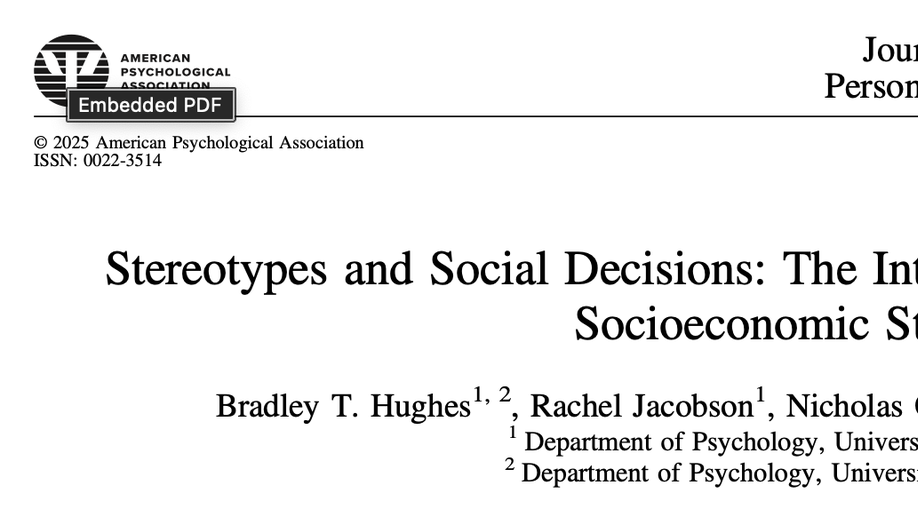
Stereotypes and social decisions: The interpersonal consequences of socioeconomic status
Perceptions of socioeconomic status (SES) can perpetuate inequality by influencing interpersonal interactions in ways that disadvantage people with low SES. Indeed, lab studies have provided evidence that people can detect others’ SES and that they may use this information to apply stereotypes that influence interpersonal decisions. Here, we examine how SES and SES-based stereotypes affect real-world social interactions between people from a socioeconomically diverse population. We used the computer-mediated online round-robin method to facilitate interactions among 297 participants from across the U.S. Participants completed a series of dyadic interactions with other participants in virtual rooms in which they discussed a recent negative consumer experience. After each interaction, they judged the interaction partner’s SES, personality traits, and credibility of their consumer experience. Results showed that people perceived SES with moderate accuracy in the interactions, which elicited negative interpersonal stereotypes of low-SES individuals for all 12 of the personality traits measured. People also preferred to affiliate with others with high SES, had more sympathy for them, and found their experiences more credible. SES-based interpersonal stereotypes about personality traits mediated these associations. The perception of SES in real- time interactions thus appears to activate stereotypes that guide social judgments, supporting the hypothesis that interpersonal effects contribute to economic inequality.
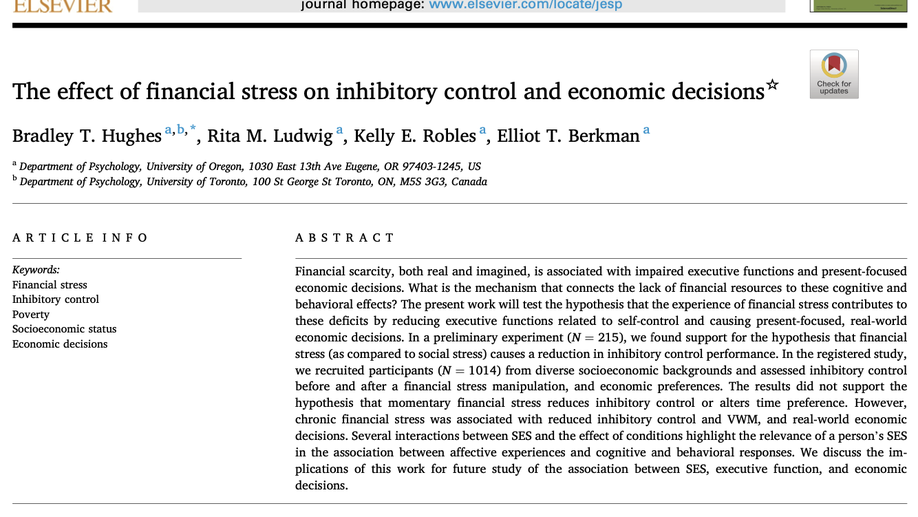
The Effect of Financial Stress on Inhibitory Control and Economic Decisions
Financial scarcity, both real and imagined, is associated with impaired executive functions and present-focused economic decisions. What is the mechanism that connects the lack of financial resources to these cognitive and behavioral effects? The present work will test the hypothesis that the experience of financial stress contributes to these deficits by reducing executive functions related to self-control and causing present-focused, real-world economic decisions. In a preliminary experiment (N = 215), we found support for the hypothesis that financial stress (as compared to social stress) causes a reduction in inhibitory control performance. In the registered study, we recruited participants (N = 1014) from diverse socioeconomic backgrounds and assessed inhibitory control before and after a financial stress manipulation, and economic preferences. The results did not support the hypothesis that momentary financial stress reduces inhibitory control or alters time preference. However, chronic financial stress was associated with reduced inhibitory control and VWM, and real-world economic decisions. Several interactions between SES and the effect of conditions highlight the relevance of a person’s SES in the association between affective experiences and cognitive and behavioral responses. We discuss the implications of this work for future study of the association between SES, executive function, and economic decisions.
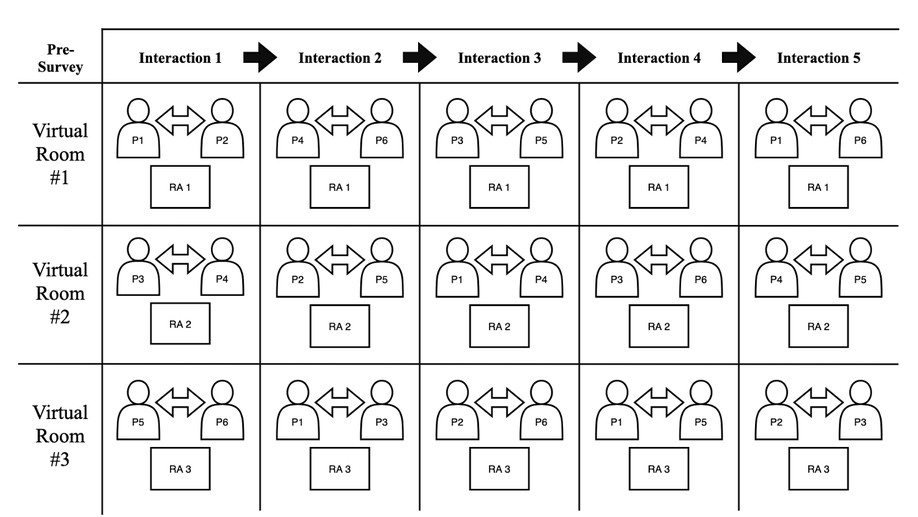
The Computer-Mediated Online Round Robin (CMORR): An Online Method for Studying Impressions and Social Interactions
Research on impressions and social interactions has predominately examined perceptions of artificial stimuli or those made by convenience samples of undergraduates. In the present work, we introduce and validate a new experimental method, the Computer-Mediated Online Round Robin (CMORR), with the aim of providing researchers a tool to extend the study of inter- personal phenomena to more diverse populations. We describe the method and provide guidance for future CMORR studies. We collected CMORR data from an undergraduate sample (N = 171), and compared the structure and accuracy of impressions of Big Five personality trait to two in-person studies; one with group interactions (N = 225), one with dyadic interactions (N = 511), and meta-analytic estimates from the literature. The results showed a general correspondence between impressions formed in online interactions and in in-person contexts. The findings support using CMORR to study general questions about impressions and social interactions.
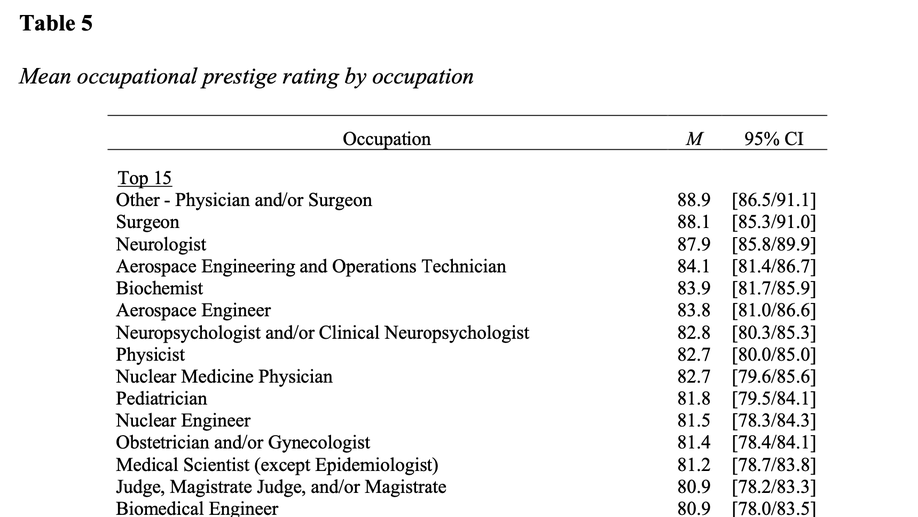
Occupational Prestige: The Status Component of Socioeconomic Status
The relationship between life outcomes and an individual’s standing in the social and economic hierarchy of society is an important topic across the social sciences. Foundational to this work is assessing an individual’s standing in this hierarchy, often referred to as socioeconomic status (SES). One component of an individual’s SES, often overlooked in the psychological literature, is occupational prestige – the amount of status accorded to them based on their occupational role. In this research, we collected and validated a new index of occupational prestige for 1029 specific occupations, including all jobs in the US Department of Labor’s O*NET database, and 22 broader occupational families. In Study 1, we collected a comprehensive set of occupational prestige ratings from an online convenience sample, and demonstrated their high reliability. In Study 2, we developed a crosswalk between the ratings collected in Study 1 and prior ratings of occupations listed in the US Census and show convergent validity with previous indices. In Studies 3 and 4 we used additional data to evaluate the construct validity of occupational prestige more broadly. In Study 3, we established convergent and discriminant validity with other indicators of SES: income and educational attainment. In Study 4, we use the O*NET database to identify the characteristics of occupations most strongly associated with prestige. These results support the validity of the index and suggest occupations with high prestige require skills traditionally emphasized in liberal arts education (e.g., critical thinking, reading comprehension).
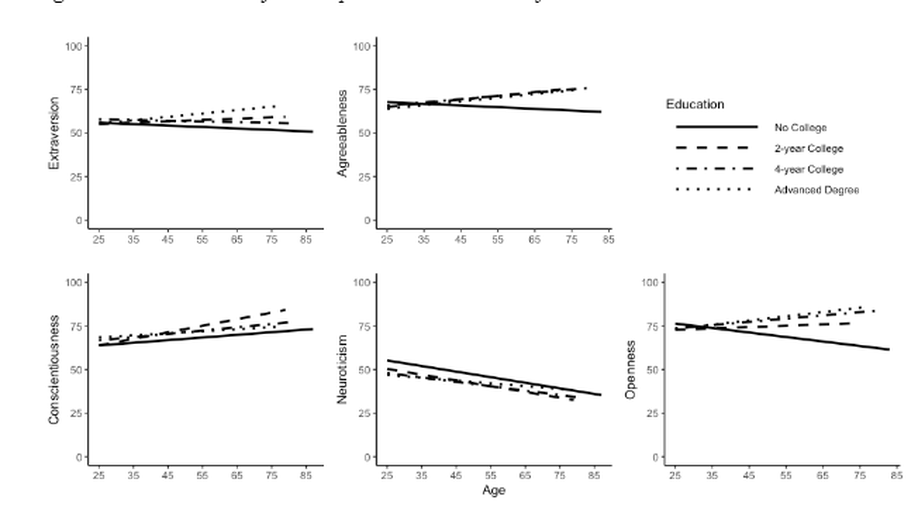
The Big Five Across Socioeconomic Status: Measurement Invariance, Relationships, and Age Trends
Associations between socioeconomic status (SES) and personality traits have important implications for theory and application. Progress in understanding these associations depends on valid measurement, unbiased estimation, and careful assessment of generalizability. In this registered report, we used data from AIID, a large online study, to address three basic questions about personality and SES. First, we evaluated the measurement invariance of a common measure of personality, the Big Five Inventory, across indicators of educational attainment, income, and occupational prestige. Fit indices showed some instances of detectable noninvariance, but with little practical impact on substantive results. Second, we estimated associations between SES and personality. Results showed that personality and SES were largely independent (most rs < .1), in contrast to predictions derived from several previous studies.Third, we tested whether age trends in personality were moderated by SES. Results did not support predictions from social investment theory, but they did suggest that age trends were largely generalizable across SES. We discuss the implications of these findings for developing and validating personality measures for use in diverse samples. We also discuss the implications for theories that propose that the Big Five are responsive to, or partially responsible for, people’s economic and social conditions.
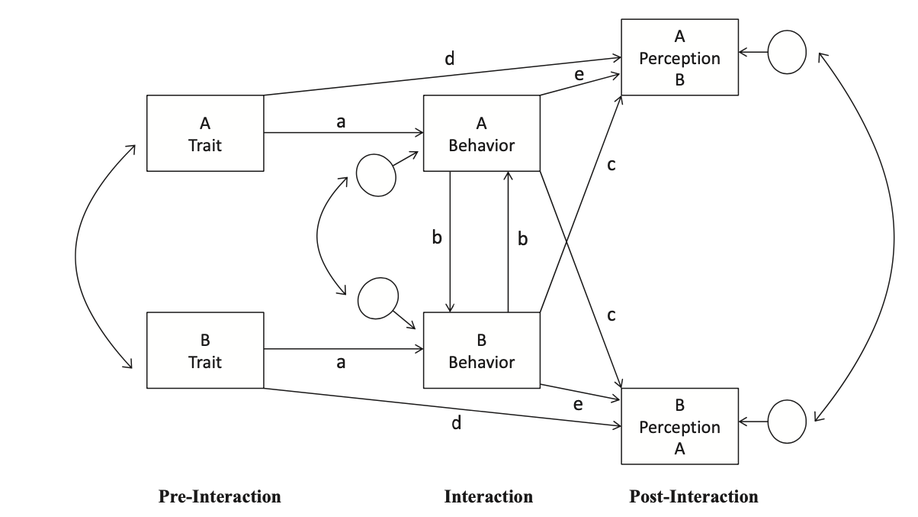
Is perceived similarity more than assumed similarity? An interpersonal path to seeing similarity between self and others
People perceive similarity between their own personality characteristics and the personality characteristics of others. This association has sometimes been labeled “assumed similarity,” reflecting the interpretation that it is a cognitive bias. Another possibility, however, is an interpersonal path to perceived similarity: personality traits that are manifested in behavior may elicit similar or dissimilar behavior from others, and people form perceptions based on what they have elicited. Drawing on theories of interpersonal perception and interpersonal theory, we proposed and tested for evidence of such perceiver-elicited similarity effects, as well as trait and state assumed similarity. Previously unacquainted participants (N = 322) completed personality assessments, interacted in dyads the next day, and then reported perceptions of each other’s personalities. The results showed broad support for the expression and accurate perceptions of most Big Five domains and facets. The preregistered directional hypotheses for behavior elicitation and perceiver-elicited similarity were supported for 3 of 5 traits. Participants interpersonally elicited and then accurately perceived similarity in sociability and openness, and dissimilarity in assertiveness. We also found evidence for assumed similarity for agreeableness and energy level, but participants did not elicit similar behavior from their partners for those traits. We discuss implications for treating perceived similarity as a dynamic, multicomponent phenomenon, and the possibility that assumed similarity emerges from the repeated experience of interpersonally elicited and perceived similarity.
Research
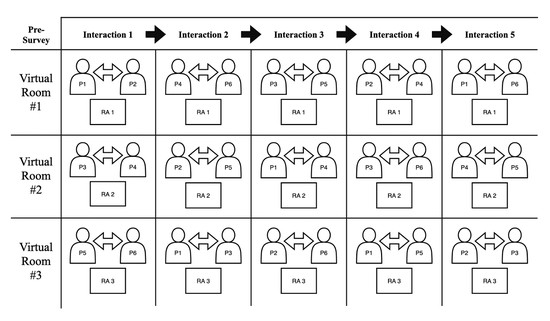
CMORR
In this project, I developed the Computer Mediated Round Robin (CMORR) study design and validated its use to study interpersonal perceptions.
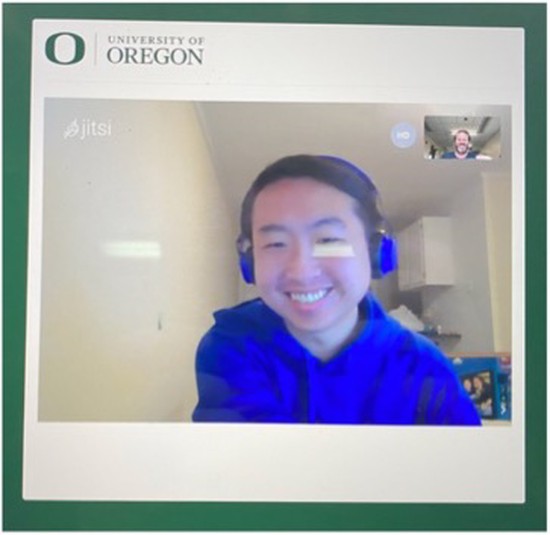
Impression Formation
In this area of research, I examine fundamental questions about impression formation.

Interpersonal Stereotypes
The study of interpersonal stereotypes examines how an individual’s position in a social hierarchy, group membership, or identity bias impressions of their personality traits.

Occupational Prestige
In this work, we collected and validated a new index of the occupational prestige of >1000 O*NET occupations. Click here for more info about how to easily incorporate this measure into your own work on SES.